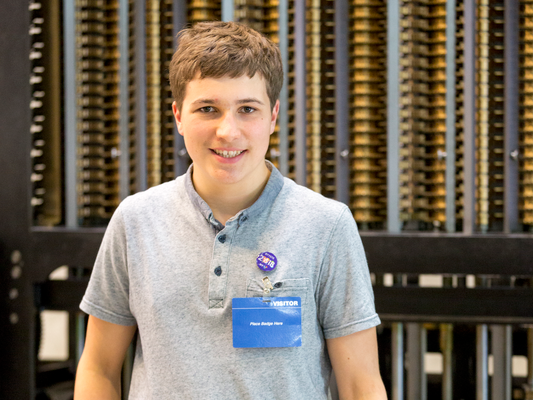This Inspiring 18-Year-Old May Have Solved Our Microplastic Problem

Microplastic pollution is a huge issue that our waste processing plants, ocean clean up crews, and other do-gooders have been woefully unprepared to deal with- until now.
Fionn Ferreira, a brilliant 18-year-old from West Cork, Ireland has come up with a solution that just may work.
The idea won him first place in the Google Science Fair, and it may turn the tide on our planet’s future.
More on Microplastics
To understand how significant this breakthrough is, you have to first understand the massive scale of the problem.
If you’re not familiar with microplastics, they’re teeny tiny pieces of plastic waste that are steadily being washed into our oceans and distributed. The largest of them are about the size of a sesame seed.
They come from a variety of sources- everything from larger plastic waste breaking down to “microbeads” in cosmetic products to polyester clothes tumbling around in your washing machine.
Microplastics have become so prevalent that they’ve even been found on Earth’s highest mountains and its deepest oceans.
These tiny plastic particles are consumed by filter-feeding ocean creatures and from there distributed throughout the entire food chain- all the way up to humans. Increasingly, they can be found in the food that we eat and the water that we drink.
Until now, wastewater treatment facilities have had no viable way to filter out these particles, so they’ve just been accumulating more and more.
Now we’ve got a huge mess to clean up.
The Potential Solution
Ferreira took inspiration for his experiment from the work of physicist Arden Warner.
In 2010, Warner began developing a method of cleaning up oil spills by using non-toxic iron oxide and a strong magnet to pull the magnetized solution, oil and all, out of the water.
Ferreira wondered if the same principle could be applied to microplastics.
So, he designed an experiment to find out!
Basically, the process involved putting a set amount of prepared microplastics into water, adding oil and iron oxide in the form of magnetite powder, stirring it all up, and then extracting the magnetite, along with the microplastics, with a strong magnet.
You can hear him explain it in his own words below:
It works because the oil and magnetite powder form a ferrofluid that latched on to the microplastic particles, allowing them to be easily lifted out with a magnet, leaving behind nothing but clean water. Later tests revealed that the process works just as well even without adding oil.
And when I say it works, I mean it really works! See for yourself:
Fionn has been able to achieve a decrease in microplastics of at least 85% with this method, and he tested 10 of the most common types of plastics to make sure that this solution was broadly applicable.
Now, he’s working on a way to scale up this technology so that it can be put to use on a larger scale in wastewater management plants.
The sooner that happens, the sooner we can stop adding microplastics to our oceans!
An Inspiring Story
What’s amazing about Fionn Ferreira isn’t limited to the incredible scientific breakthrough he was able to come up with. That’s only part of the story.
What’s really amazing is that he was able to come up with this idea and win first place in an extremely competitive and prestigious competition- without access to professional laboratories and expensive equipment that other contestants were using.
In fact, he made a lot of his equipment himself- from the spectrometer he used to measure the levels of remaining microplastics to the microplastics themselves, which he sanded down from larger plastic pieces or manually extracted from cosmetic products.
There’s definitely a lesson to be learned in that for all of us.
Do what you can, where you are, with what you have. You never know what may come of it!

Kayla Robbins
DoneGood Contributor
Freelance writer working with bighearted businesses who want to better our world.



Leave a comment